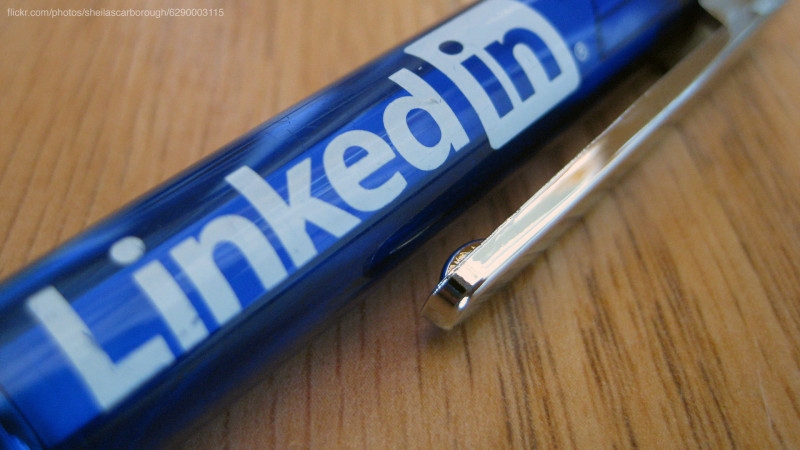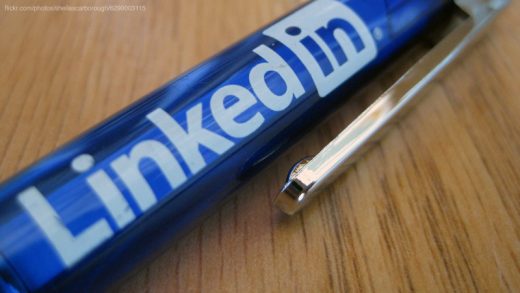LinkedIn lets advertisers generate leads from Sponsored InMail, Dynamic Ad campaigns
Advertisers can also now ask for more information by adding custom questions to their Sponsored Content and Sponsored InMail campaigns’ lead gen forms.

LinkedIn is giving businesses new ways to solicit people for their information through ads on the business-centric social network.
In April, LinkedIn debuted Lead Gen Forms, enabling advertisers to ask for information like their names, email addresses and company names through Sponsored Content ads. Now, the Microsoft-owned company is extending these forms to its Sponsored InMail ad format and allowing brands to add their own questions. It is also letting brands collect leads through Dynamic Ads campaigns.
Lead Gen Forms for Sponsored InMail
Lead Gen Forms attached to Sponsored InMail campaigns will roll out to all advertisers this week and work the same as the original Sponsored Content version, with no added cost to the advertiser for attaching them to an ad. When people open the message a business paid to place in their LinkedIn inbox, a brand can augment the message with a request for information from the person’s LinkedIn profile, including their name, email address, job title and company name. LinkedIn will automatically populate the form with that information to make it easier for the person to pass it along. The person can edit some fields, such as their email address, but cannot leave any blank when submitting the completed form.
LinkedIn’s Lead Gen Forms aim to streamline the form completion process to make it more likely that people will fill them out. While testing the Lead Gen Forms for Sponsored InMail with 35 advertisers, the company saw that its forms tripled the number of conversions generated by the more manual process of having someone click from the message to a brand’s site to type in their details, according to Andrew Kaplan, group manager of product marketing for LinkedIn Marketing Solutions.
Brands will be able to access the data submitted through LinkedIn’s Lead Gen Forms within LinkedIn’s Campaign Manager self-serve tool or through third-party CRM systems, including DriftRock, Marketo, Microsoft Dynamics 365, Oracle’s Eloqua and Zapier. LinkedIn will report the number of leads, lead completion rate and the average cost per lead to businesses for each campaign but only within Campaign Manager. The company will not share campaign performance data with the third-party CRM systems, so brands will not be able to trace the value of the leads received back to the individual campaign that delivered them. Also making it difficult for brands to track their ads’ full return on investment, LinkedIn also does not enable conversion tracking for Lead Gen Form campaigns.
Sponsored InMail vs. Sponsored Content
Now that businesses have multiple options for how they can run a lead-generation campaign on LinkedIn, they may wonder whether there are unique reasons to attach a Lead Gen Form to a Sponsored InMail ad over a Sponsored Content ad or vice versa. Unfortunately, they’ll need to find out for themselves. Kaplan said LinkedIn has “no data to cite” to answer that question. He also recommended that brands use the two options in tandem to increase their campaigns’ reach.
While the Lead Gen Forms may work the same for both Sponsored Content and Sponsored InMail campaigns, there is one important difference between the two options. The Sponsored Content version is still limited to LinkedIn’s mobile app, while the Sponsored InMail version can run on mobile as well as desktop. Kaplan declined to say why the Sponsored Content version is not available to run on LinkedIn’s site.
Custom questions
In addition to collecting information from people’s LinkedIn profiles, businesses can now use the Lead Gen Forms to collect other information. Both the Sponsored Content and Sponsored InMail versions of Lead Gen Forms can now include up to three custom questions created by the advertiser, which will count toward the maximum seven fields that advertisers are allotted to include in a form. Answer options can be formatted as multiple choice, or brands can also ask people to type in an answer, which can be up to 100 characters long.
Lead generation through Dynamic Ads
Finally, LinkedIn is giving advertisers a way to collect leads through their desktop-only Dynamic Ads campaigns. These ads are already designed to capture people’s attention by featuring a person’s profile photo, first name and job title; as of today, they can also capture their full name and email address.
Now, when businesses use Dynamic Ads to get people to download a piece of content, like a white paper, by clicking on the ad, they can require a person to send the business their name and email address in order to receive the download. If a person opts in, LinkedIn will automatically send that data to the advertiser without the person having to go through any form-completion steps like they would with one of its Lead Gen Forms. But since the person never fills out a form, they are not able to edit the information sent to the business, meaning the primary email address associated with their LinkedIn account is what gets sent.
Marketing Land – Internet Marketing News, Strategies & Tips
(51)



